Robin Robert eased his F-150 truck uphill through dryland wheat fields. He passed a pen where cattle moan and chickens tiptoe beneath hay bales stacked 20 feet high. His younger brother David, 64, hopped out to open a metal gate that led to a tiny wooden shack with antlers nailed over the front door.
Their grandfather homesteaded here in the early 1900s, hauling spring water up this hill with a wagon and burning sage brush to keep warm. The siblings have worked this land — at the bottom of a V-shaped canyon on the outskirts of the Hanford nuclear site — their entire lives.
David surveyed the family’s 6,000-acre property, where declining water levels have limited them to growing wheat and hay. The week before, they sold a few calves to make ends meet.
“In 20 or 30 years, if the water level keeps going down, we may not even have irrigation,” David said last October. “We live on a tight budget here — we got old equipment, and we just hope we make it from year to year.”
He then turned his gaze to a different resource for making a living off the land a while longer: transmission lines running down the hills and off to a substation. The Robert family has leased just under half of their ranch to a Canadian company, Innergex, which plans to build the state’s largest solar energy plant here.
“The joke is we get to harvest the sun,” Robin said.
Benton County’s Board of Commissioners passed a ban on solar and wind energy projects throughout much of the county in 2021, justifying the moratorium as protecting “prime farmland.” But local officials lack final say over such projects. That authority often instead lies with Washington’s Energy Facility Site Evaluation Council (EFSEC), a central agency with the power to recommend approval or denial of projects statewide.
EFSEC serves a crucial role in the state’s energy transition. And the power it has to overrule local land-use policies — often in rural, largely conservative parts of the state where the majority of wind and solar plants are sited — has put it at the center of a national backlash to renewables. A 2024 Columbia University study found nearly 400 local jurisdictions with policies restricting wind and solar energy development — including Kittitas, Yakima, Grant and Klickitat counties.
But Washington needs more electricity. Lots of it. Energy analysts project the state will need to double its generating capacity over the next 25 years as buildings, vehicles and other infrastructure go electric. Lawmakers have directed the state’s utilities to meet that growing demand with 100% carbon-free sources by 2045.
Perhaps no conflict better epitomizes the challenges facing EFSEC than the nearby Horse Heaven Hills, a proposal to build more than 200 wind turbines on a prominent ridgeline visible from the Tri-Cities area of Richland, Kennewick and Pasco. A diverse range of groups emerged to resist the wind farm, including Tri-Cities homeowners, wildlife conservationists and the Yakama Nation, which considers the Horse Heaven Hills sacred.
If the wind farm’s opponents see EFSEC as too friendly to energy developers, some industry and climate advocates argue the opposite. EFSEC is overly cautious, they say, burdening needed climate change interventions with overzealous restrictions. All sides have accused EFSEC of disregarding its own scientific evidence and questioned the sometimes muddled reasoning behind its decisions.
A recent study commissioned by the state Legislature recommended overhauling the energy council’s leadership and drafting clearer standards for approving projects. It also criticized the quasi-judicial process the council uses to weigh abstract questions like whether farming, wildlife and tribal culture are as important as clean power.
Nearly five years have passed since the Robert family signed the lease with Innergex. The project first went before EFSEC in 2022, but as David Robert looked out over the ranch last fall, he still could not guess when they might ever see a decision.
“It’s so sad that it takes so long to do anything,” he said. “They keep saying we need all this green energy, but man, people don’t realize it’s like — to get it done you’ve gotta go through so much.”
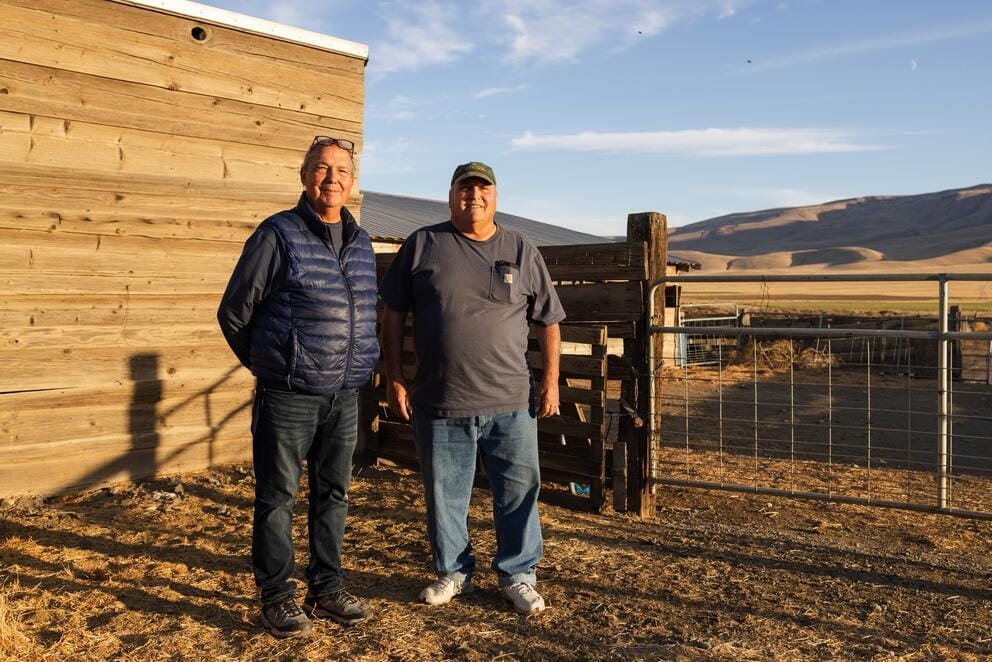
Dave Robert, left, and his brother Robin at their family’s long-time ranch, named Robert 5+1, on the edge of Benton County on Thursday, Oct. 10, 2024. The ranch, where they run cattle as well as farm wheat and alfalfa, has been in the family for over 100 years. However, the water table has subsided in recent years, making farming more challenging, and the family is eager to lease just under half of their land to develop what would be the state’s largest solar energy plant, allowing the Robert family to maintain ownership of the ranch. (Emree Weaver for Cascade PBS)
Statewide authority
Legislators created EFSEC in 1970, at the beginning of the state’s botched experiment with nuclear energy, and empowered it to supplant local authority. They have since granted it purview over wind and solar plants, along with a growing list of newer technologies like battery energy storage, biofuels and green hydrogen.
Flush with Biden-era tax credits, private energy companies have in recent years submitted a flurry of proposals heavily concentrated in Central Washington. Since 2021, the council has reviewed nine applications for renewable energy plants, compared to just one in the eight years prior. President Trump has attacked wind turbines and ordered federal agencies to withhold funds from two key climate and infrastructure bills passed during the Biden administration, stoking uncertainty for the renewable industry’s future.
“We need to get off of fossil fuels like, yesterday,” said Hal T. Nelson, professor of environmental and natural resource policy at Portland State University. “Global warming is happening much faster than we anticipated and we’re seeing that in terms of all the forest fires and the heat domes and even the extreme cold temperatures.”
State law directs EFSEC to prioritize reducing dependence on fossil fuels while ensuring that new energy plants have “minimal adverse effects” on the environment — balancing the need for cheap, abundant and clean energy with the broad interests of the public.
The governor appoints a chair to lead the council. Other voting members include representatives selected by the state departments of Commerce, Ecology, Fish & Wildlife, Natural Resources, and the Utilities and Transportation Commission, plus a representative chosen by the local jurisdiction where the project would be built. The governor retains final authority to approve or reject EFSEC’s decisions.
Statute requires the council to deliver permitting recommendations to the governor within 12 months of receiving an application, but the council routinely misses that deadline. (The law allows extensions “as is mutually agreed by the council and the applicant.”)
Cascade PBS requested interviews with every council member and Kathleen Drew, who served as council chair from 2018-2024. None were willing to talk.
In January, Gov. Bob Ferguson appointed Kurt Beckett, a former chief operating officer with the Seattle-based lobbying firm Strategies 360, to replace Drew as chair. In his first meeting as chair, Beckett disclosed that his clients at the lobbying firm included the developer of the Horse Heaven Hills wind farm and two other solar proposals currently before EFSEC. He promised to recuse himself from any decision-making related to those projects. Beckett did not respond to an interview request.
In an effort to speed up the energy transition, lawmakers recently commissioned an independent evaluation of Washington’s permitting system. The Washington, D.C.-based Beveridge and Diamond environmental law firm produced a report in June 2024 that criticized EFSEC for failing to meet its deadlines for processing applications and lacking clear metrics for evaluating projects, resulting in unpredictable outcomes and unnecessary delays.
“Developers we interviewed also asserted that [EFSEC representatives] often ‘move the goalposts,’” the report’s authors wrote, “by relying on guidance or other documents that have not been published, subject to agency review, or peer review by scientists.”
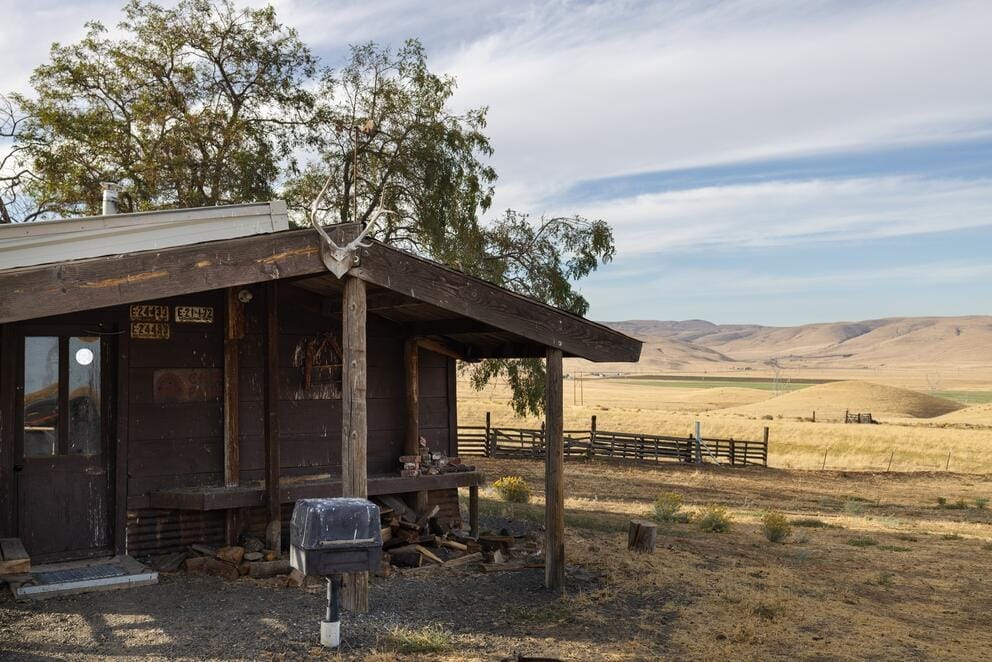
The shack where the Robert siblings' grandfather homesteaded over a century ago near Rattlesnake Ridge, on the outskirts of the Hanford Reach National Monument. (Emree Weaver for Cascade PBS)
Deadlines and delays
Early in the permitting process, EFSEC must determine how extensively to study a proposal’s environmental impacts. Under the State Environmental Policy Act, the agency has 90 days to decide whether to require a full environmental impact study, a rigorous process that can take a year or more. That timeline can be shortened if EFSEC decides that the project has no significant environmental impacts, or if the applicant modifies the project to minimize harm to the environment.
EFSEC opted to advance the Robert Ranch proposal under that abbreviated process, formally known as a “mitigated determination of nonsignificance.” But it took them two years to make that decision.
Sonia Bumpus, EFSEC’s executive director, said the agency missed its SEPA threshold deadline by 21 months because the developer submitted an incomplete application missing needed studies. Multiple meetings with the Yakama Nation also extended that timeline, she added.
Delays are among the most common complaints against EFSEC, along with a lack of staff expertise and an overly formal court-like “adjudication” process. Streamlining permitting matters, experts say, because rising power demand from data centers and vehicle electrification could force continued reliance on fossil fuels.
“There’s a lot of coal plants and gas plants and other things that have been slated for retirement that aren’t going to be retired, at least as quickly,” Nelson said. “And in Arizona and Montana and other places, they’re building new gas plants, they’re not building renewables.”
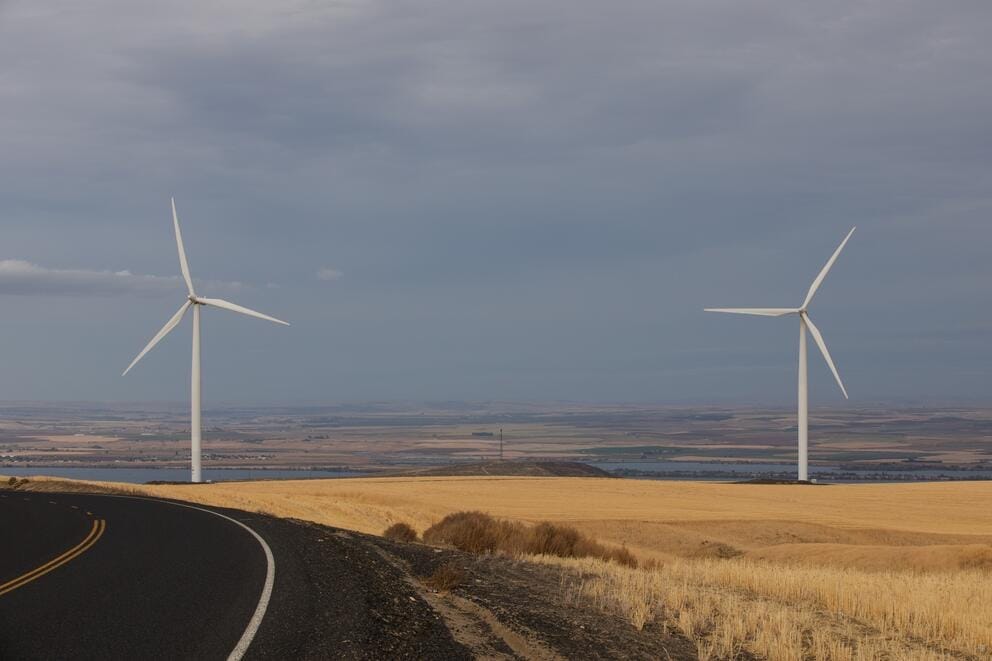
Wind turbines, part of the Nine Canyon Wind Project, are located southeast of Kennewick. (Emree Weaver for Cascade PBS)
Tribal priorities
On a prominent wall in the Tribal Headquarters of the Yakama Nation hangs a floor-to-ceiling map that shows two boundaries. The current borders of the Yakama Reservation are shaded. Surrounding that in a brighter green color is a much larger area, which stretches north into the Cascade Mountains, encompassing the entire cities of Ellensburg and Wenatchee, south to the Columbia River and east into a ridgeline known as the Horse Heaven Hills.
“People commonly call them the ceded area lands,” said Jerry Meninick, former tribal chairman and current deputy director of culture for the Yakama Nation. “But to me they’re the traditional use areas, because we’re still using them.”
The tribe chose Meninick as one of several leaders to give testimony before EFSEC in 2023 as part of the energy council’s deliberations on the Horse Heaven Hills wind farm proposal. State law requires EFSEC to provide “early and meaningful participation and input” to tribes during siting review as well as to “avoid, minimize, or mitigate any adverse effects on tribal resources or rights.”
EFSEC staff met with Yakama Nation officials numerous times throughout the Horse Heaven Hills process. But procedural records suggest the agency struggled to mediate between the divergent worldviews of the Yakama Nation and the developer.
In his testimony, which is heavily redacted, Meninick reminded the council that his people relinquished the land in exchange for promises outlined in the Treaty of 1855.
“The only one who can make a determination regarding the land and our resources is the Creator,” Meninick told EFSEC. “When the Treaty was negotiated, our people felt that the government’s acceptance of the Treaty was an acknowledgement and understanding of the Creator’s law.”
Forged after brutal campaigns of war, disease and state-sanctioned violence, the Treaty of 1855 formalized the U.S. government’s colonization of land that had belonged to the Yakama, Palouse and many other tribes, which officially “ceded” the expansive lands depicted on the wall at the tribal headquarters. But it also preserved rights for the tribes, recognized as a nation, to hunt, fish and gather on those “usual and accustomed” lands. The U.S. Constitution regards treaties as the “supreme law of the land,” above those of any state.
Meninick, 79, has a special stake in these lands. In his 20s, elders assigned him the responsibility of introducing people’s souls into the afterlife, and he has since conducted hundreds of funerals. These services vary greatly depending upon where the deceased came from, because of their connection to the land.
In an interview with Cascade PBS, Meninick compared the role of the Horse Heaven Hills in his religious practice to the way Catholics feel about Notre Dame.
“The fact is, you have to live it to understand it,” Meninick said.
His impression of the EFSEC process was that his concerns were an afterthought and the hearing was little more than a “courtesy pat on the fanny.”
“This permit has no authority, really … I mean, how dare they compare this beautiful sacred history to this procedural process,” Meninick said with a weary laugh. “They’re violating nature’s law.”
The Yakama Nation filed a legal appeal in December seeking to revoke the wind farm’s permit. Benton County and Tri Cities CARES, a group of retired area homeowners, also filed lawsuits.
Not all tribal nations share the Yakama’s steadfast opposition to the Horse Heaven Hills wind farm. The Confederated Tribes of the Umatilla Reservation, which also ceded lands of religious and cultural significance there, told EFSEC that they negotiated directly with the developer, Scout Clean Energy, which addressed their concerns about the project. The Umatilla’s Department of Natural Resources declined to elaborate on the agreement or how they found common ground with the developer, telling Cascade PBS the agreement was confidential.
“EFSEC places a high level of emphasis on tribal engagement,” an EFSEC spokesperson wrote in an email, “and input from tribes can regularly be seen reflected within both SEPA determinations and Council recommendations.”
Map by Madeline Happold/Cascade PBS
Birds vs. turbines
In April 2024, EFSEC made a decision that expanded its list of critics: The council voted to slash the Horse Heaven Hills wind farm in half, prompting outcry from renewable energy developers and sparking debate among climate advocates.
News reports framed the curtailment as a means to protect the ferruginous hawk, considered endangered in Washington state but not nationally. State wildlife officials argued for a 2-mile buffer zone around all areas where hawk nests were historically documented, regardless of whether the nests were recently occupied.
Former Gov. Inslee took the rare step of rejecting the council’s recommendation. In a letter, he wrote that the state should not only approve a full- or near-full-size wind farm at Horse Heaven Hills, but will need to build 20 more like it to bring about the clean energy transition demanded by state lawmakers.
“We must come to grips with the fact that we will need to adapt and accept relatively moderate changes to our physical landscape, in order to ensure continued, reliable electricity service,” Inslee wrote.
Critics seized on EFSEC’s attempt to scale back the project as an example of the council allowing the individual agencies’ priorities to override the state’s broader energy and climate goals. The authors of the legislature-commissioned Beveridge report called the 2-mile buffer zone an “extreme approach … with, at best, marginal benefits to ferruginous hawks.”
Others saw the council caving to NIMBYism. A determined group of Tri-Cities homeowners, supported by business owners and Benton County officials, fought the proposal vigorously, foregrounding its aesthetic impact. EFSEC’s decision document echoed some of those concerns, noting the project as proposed would “visually transform” the region and create an “undesirable skylining effect.” The council’s recommendation also included more than a dozen references to hang-gliding and paragliding. (An EFSEC spokesperson declined to clarify what role hang-gliding played in the decision, saying the agency preferred to let its written decision speak for itself.)
The Beveridge report’s authors argued that the decision highlighted a lack of objective metrics for how the agency judges proposals. As a solution, they recommended overhauling the council’s structure, swapping the agency heads for three governor appointees with specific renewable energy expertise.
One of the groups that took issue with EFSEC’s cutback was Renewable Northwest, a nonprofit whose members are split between renewable energy developers and climate advocacy groups. Renewable Northwest typically does not take positions on specific projects, but a chorus of concerned members felt that the Horse Heaven Hills decision signaled an unpredictable regulatory environment for future developers.
“All of these other companies were coming forward and being like, if the Horse Heaven project is judged in the way that it is by EFSEC right now, we don’t want to build projects in Washington anymore,” said Kate Brouns, who led policy for the organization before taking a job as energy advisor to Gov. Ferguson in January.
In cutting back the wind farm, Brouns saw a governmental tendency similar to what the report’s authors identified. State agencies are well trained in identifying the risks that infrastructure poses to the environment, but less attentive to quantifying the benefits of that infrastructure. So they act cautiously rather than with the boldness climate change demands.
“It’s straightforward to say, ‘Well if we remove this habitat, it could have this negative consequence on wildlife,’” Brouns said. “However, if we build this clean energy project and we potentially take this much greenhouse gases out of the atmosphere by offsetting a natural gas facility or a coal plant, how many ferruginous hawk lives does that save?”
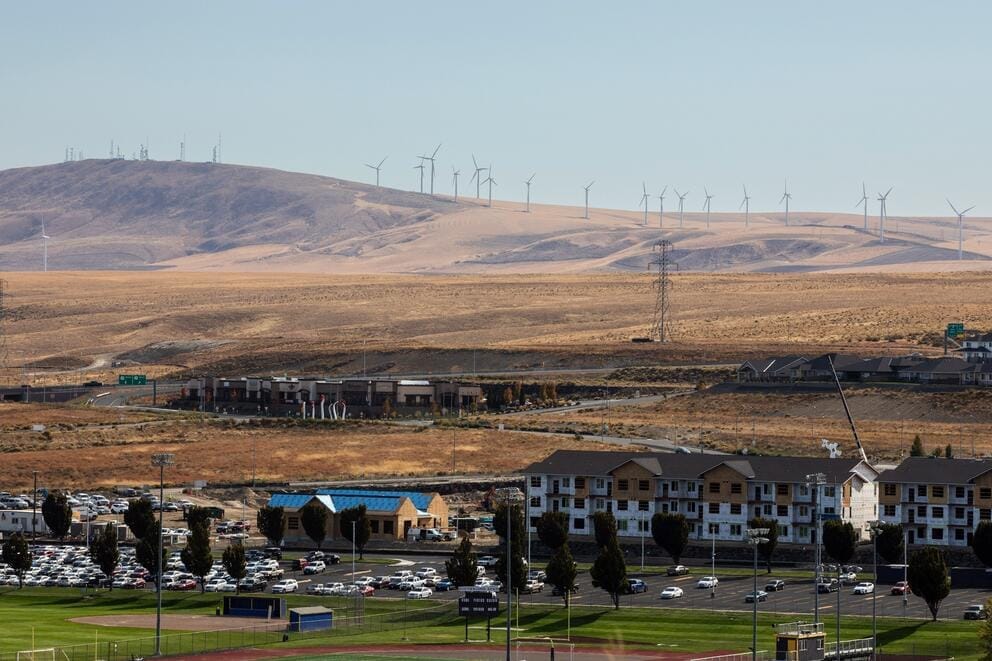
Turbines seen from Horse Heaven Hills on Thurs., Oct. 10, 2024. (Emree Weaver for Cascade PBS)
Battles to come
Battles like the one at Horse Heaven Hills are likely to intensify as Washington dials down its remaining fossil fuel plants amid a surge in electricity demand powered by the electrification of everything from cars to buildings.
Meeting that demand with renewables will require far more land than existing gas, coal and nuclear plants need. The Nature Conservancy found that achieving a nationwide net-zero grid with wind and solar would require over 250,000 square miles of land, an area larger than Texas.
Further accelerating those land claims is the ever-growing power demand of artificial intelligence, which is already straining grids in central Washington. Tech companies are turning back to fossil fuels, or to nuclear: Amazon signed a contract last October with Energy Northwest outlining a plan to construct a series of small modular reactors, an experimental type of scaled-down nuclear plant that has yet to be built in the United States, on the Hanford Site.
For skeptics of renewable energy and environmentalists alike, corporate energy hoarding offers fresh reasons to distrust the need for siting new wind and solar power plants. It does not help public confidence that profit-driven businesses also choose the locations.
“We set ourselves up for these battles all the time, usually just by chance,” said Jim Strittholt, co-founder and president of the Conservation Biology Institute, speaking from his plant-covered Corvallis office. “[Companies] look at it through an engineering lens, not a, ‘I want to avoid this native habitat or avoid prime farmland or take into consideration the viewsheds of the neighbors.’”
Strittholt worked with Washington State University to create a map of some of the most hotly contested, sun-baked lands in Central and Eastern Washington in an attempt to head off solar energy disputes before they happen. The WSU team brought together farmers, tribal nations and conservation groups to identify lands with the highest and lowest conservation and agriculture value. Solar developers shared land characteristics they valued, such as proximity to substations, water supply and workable soil and terrain.
As part of his research, state officials gave Strittholt the footprints of several currently proposed energy plants. He ran them through the crowdsourced map to see how they scored on conflicts with wildlife habitat, prime farmland and tribal cultural sites.
“Some did OK, some were in terrible places,” Strittholt said. “Which is what you would expect, because it’s random.”
Strittholt said he sees the map as a starting point in taking some public ownership of the energy transition, forging public consensus on ideal sites rather than letting bottom lines dictate where power plants go and refereeing the inevitable disputes.
The Beveridge report writers came to a similar conclusion. Citing examples from New Mexico, Wyoming, Colorado and New York, they called for the creation of a Washington “Renewable Energy Authority” that would be empowered to acquire land, obtain permits and hand off sites “build-ready” to developers. The agency would build on Strittholt’s maps to identify priority zones and offer developers incentives to build there.
“We have a false choice here,” Strittholt said. “Why can’t you protect the bird habitat and have the solar stuff at the same time? It’s possible if we’re smart about it.”
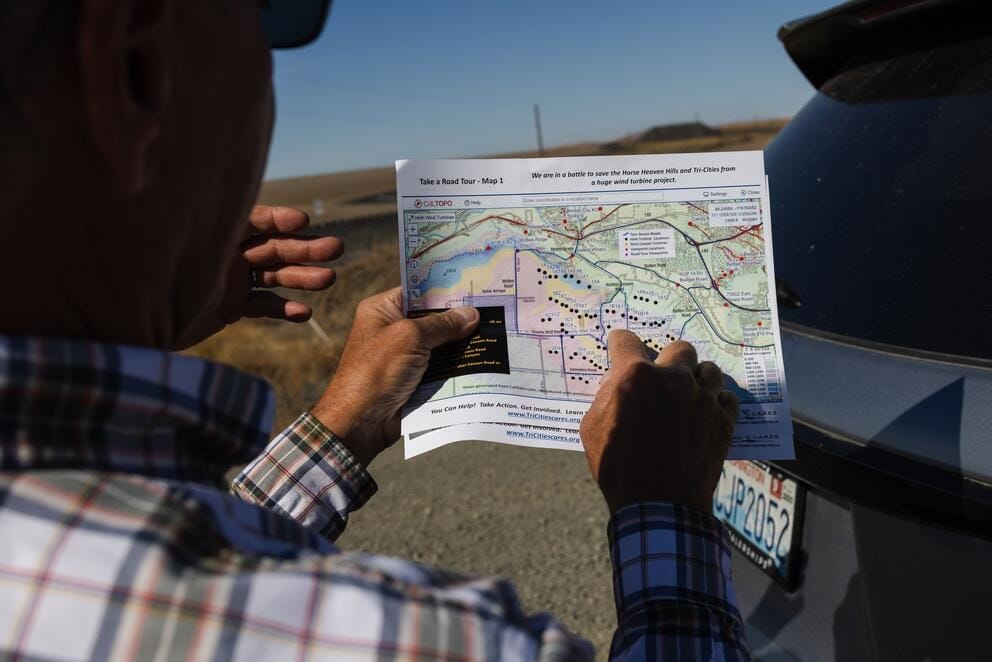
Paul Krupin of Tri-Cities C.A.R.E.S looks at a map on Thurs., Oct. 10, 2024, near Travis Road where wind turbines would be built as part of the Horse Heaven Hills wind and solar project near the Tri-Cities. (Emree Weaver for Cascade PBS)
Pushback to reforms
The Horse Heaven Hills brought public attention and scrutiny to a relatively obscure state agency. Armed with the Beveridge report’s recommendations and the backing of groups like Renewable Northwest, lawmakers are eyeing changes to speed up and standardize EFSEC’s permitting process.
West Seattle Democrat Joe Fitzgibbon said in a January committee hearing that he would like to implement clearer standards for judging applications before the council, and introduced a bill drawing directly from the Beveridge report.
“Currently there’s a lot of discretion left to EFSEC and its members,” Fitzgibbon said. “The goal of [the bill] is to provide a list of the kinds of criteria that they should be taking into account in order to remove some of the subjectivity from the process.”
Fitzgibbon’s bill failed to clear a policy committee and is likely dead for the year. But it would have required EFSEC to recommend approval of a project that reduces greenhouse gas emissions if it “avoids, minimizes, or mitigates, to the maximum extent practicable” damage to the environment, endangered species and cultural resources and “does not present an unreasonable threat to health and safety.”
EFSEC’s executive director did not take a position on the bill during the January hearing. But behind the scenes, EFSEC officials privately scoffed at the suggestion of applying prescriptive criteria to their decisions. In an internal memo responding to a draft version of the report, EFSEC’s legislative and policy manager Lisa McLean likened the proposed standards to a “checklist” and suggested they undermined the council’s decision-making authority.
The standards create a presumption of “as long as the applicant tried, the council should recommend,” she wrote.
EFSEC staff objected to many of the report’s other findings and recommendations, too, calling them one-sided and biased towards developers. Some staff even advocated for demanding that a section on reforms to EFSEC be scrubbed from the report.
In memos and emails responding to the draft report, EFSEC staff argued that the authors misunderstood the agency’s obligations under the State Environmental Policy Act, failed to mention recent improvements in permit processing time, and proposed solutions that would undermine tribal input.
“[The report] demonstrates that the position of developers is … the urgent need for clean energy should trump all other considerations (as happened years ago in building hydroelectric dams?),” McLean wrote.
Officials also objected to their minimal role in the report’s creation. In one email, former EFSEC chair Kathleen Drew sarcastically noted her “extreme satisfaction” that the agency was interviewed only once, after the draft report was already written.
EFSEC executive director Bumpus said in a February interview with Cascade PBS that the internal memos represented staff’s initial responses to what she called “systemic reforms” proposed by the report — views that have since evolved.
“We don’t take any issue with any of the legislation,” Bumpus said. “We’re open to input and ideas where we can improve our process.”
The agency is also working internally to speed up permitting times and reduce land-use conflicts, Bumpus said. Since becoming a standalone agency in 2022, EFSEC has hired more than a dozen new staff, including an environmental planner and site specialists assigned to specific projects. (Lawmakers in 2022 doubled the agency’s budget to $18 million per year in an effort to streamline applications.)
EFSEC has also expanded an optional process that allows developers to scope out the permitting details of possible sites before submitting an application. Bumpus pointed to Goose Prairie, a solar farm in Yakima County that relocated 12 miles to avoid sensitive animal habitat during the pre-application period, resulting in an expedited environmental review and permit approval within 12 months.
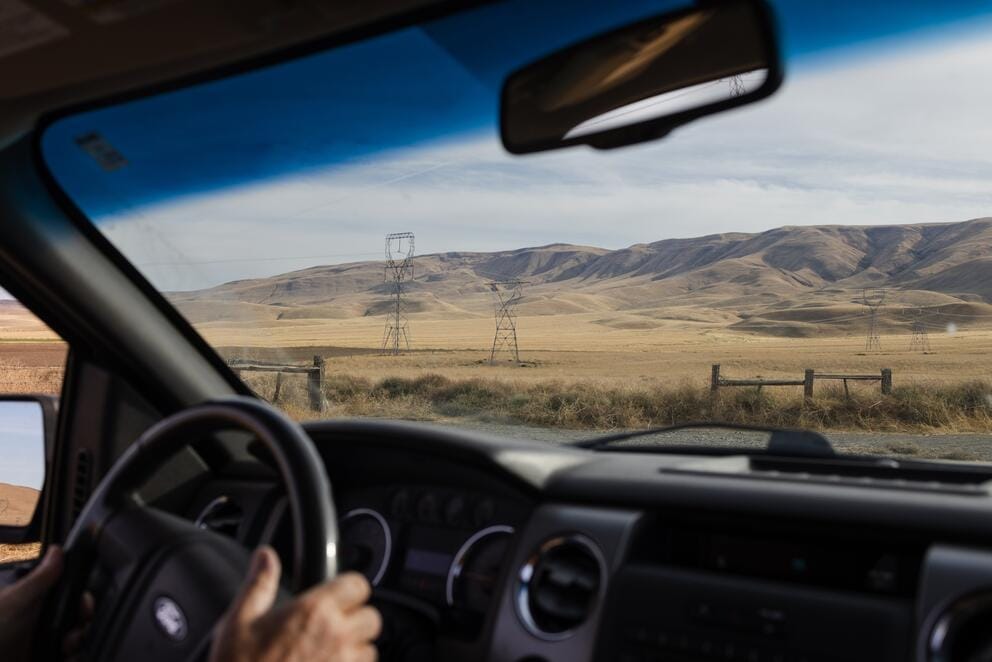
Rattlesnake Ridge, on the edge of the Robert family’s ranch. (Emree Weaver for Cascade PBS)
Plan B
In December, EFSEC recommended approval of the Robert Ranch solar project — two and a half years after the company first applied.
Not everyone celebrated the permit approval. The ranch is nestled in a valley below the Rattlesnake Mountains, also a sacred site for the Yakama, and EFSEC did not agree to all of the specific mitigation measures the tribe requested. It appeared to Meninick as just another industrial development polluting the landscape — one of a laundry list that includes a pumped storage facility in Goldendale and another solar farm on Badger Mountain near Wenatchee.
Meninick expressed broad skepticism about the pursuit of renewable energy embodied by former Gov. Inslee, which he suspects is largely a cover for the energy demands of data centers — moneymaking schemes by foreign corporations who intend to export the power out of state.
“To me that is the real project,” Meninick said. “That’s where the majority of the power is going to go.”
Meninick said he supports putting solar panels on rooftops. And the tribe is developing its own solar project over an irrigation canal, but those are different, Meninick said, because they don’t take up or damage open land.
“The Yakama Nation is in support of solar panels, wind power, if it’s done correctly,” Meninick said. “But no, these other guys, they want to go ahead and destroy large acres of land. They don’t have no sense of a contribution back to a, once those panels or windmills are done, to put the land back in its original setting. … What it reeks of is the west side is saying: ‘Put it on the east side.’”
Shortly after EFSEC and Gov. Inslee approved the solar permit for the Robert Ranch, the family got some bad news from the developer. The Bonneville Power Administration, a federal agency that operates an electrical transmission substation on their property, could not hook up the project to the grid until 2030. Construction was supposed to start this year, but now the project faces a new era of uncertainty.
A spokesperson for Bonneville declined to clarify the reason for the connection delay. An Innergex spokesperson wrote that they plan to be operational by 2030, which would mark 10 years since the Robert family signed the lease.
“The politicians will say by 2030 or 2035 we’re gonna be completely off any of this other energy,” David Robert said, “but there’s so many factors that they didn’t consider.”
The family has started talking about a Plan B. They could lease their irrigated land to another farmer, or let a neighboring cattle rancher manage their herd. Some family members have even proposed a drastic, formerly unthinkable option — selling the ranch.
“We’re not really sure,” Robert said. “The future of the ranch is — we’re kind of depending on this project to keep it going.”
Check back for a three-part podcast series on the green energy transition challenges facing Washington state on the next Northwest Reports on March 26.


